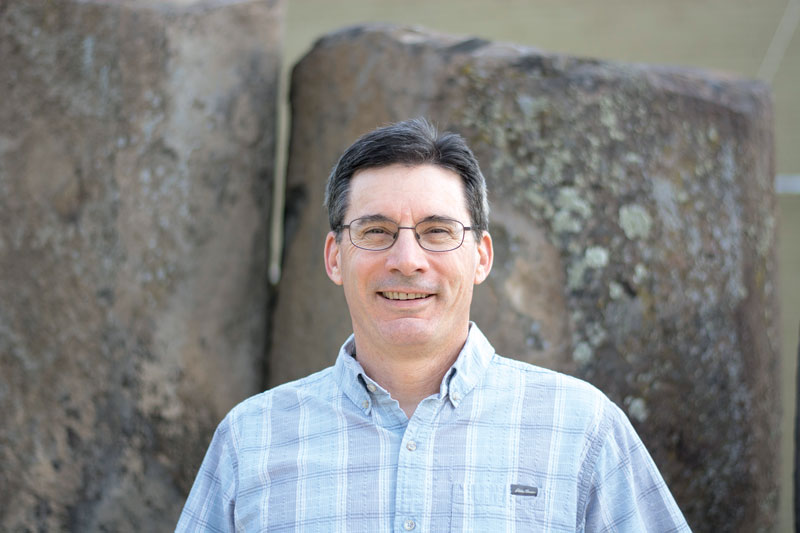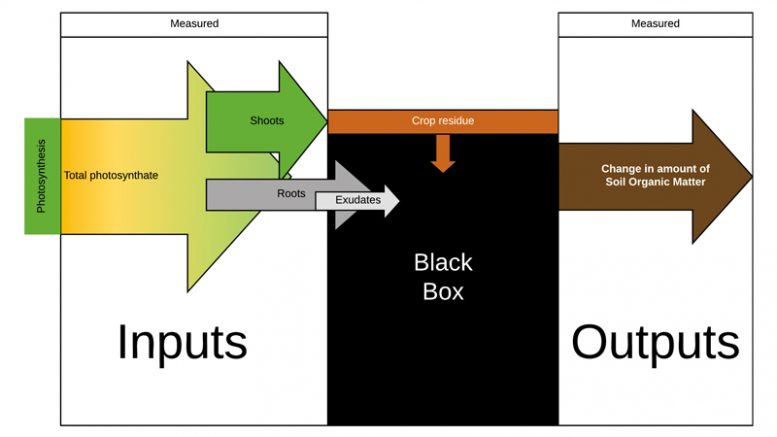What Recent Soil Biology and Soil Organic Matter Discoveries Mean for Soil Management
By Andrew McGuire, Washington State University Extension Agronomist
“This changes everything.” That is how everything is presented in today’s media – new cars, new policies and new science. For an example of the latter, look at the recent advances in soil microbiology, or “soil biology” in pop-ag speak.
Soil biology has become the means, the end and the banner flying over the soil health movement. In particular, the recent focus on the vital role of soil microbes in the production of soil organic matter has become a “This changes everything!” call to arms.
While the new scientific discoveries are important, revealing the details of microscopic soil life with new clarity, do they change everything? Here is my agronomist take on what has changed, what hasn’t and what it means for soil management.
What Has Changed?
Change 1: The microbial pathway to soil organic matter
This change brings soil microbes to the forefront in the formation of soil organic matter (SOM). Rather than just breaking down plant material until what is left is SOM or humus, soil microbes produce compounds that become SOM. And when they die, microbe “necromass” can also become SOM. Perhaps 50 percent or more of the total SOM is formed through this microbial pathway.
Change 2: Stable humus concept questioned
The longtime view of humus as a component of SOM resistant to decomposition, and therefore stable and long-lived, is now in question. The alternative view is that humus is created by our extraction methods and that natural SOM is much more dynamic, with constant turnover from protected locations on clay and in aggregates being the norm.
Change 3: The clay connection to soil organic matter
Recent observations suggest that microbial-derived SOM is most often attached to clay and smaller silt particles. The bonding of SOM to clay protects the SOM from microbial decomposition, at least for a while. This SOM is called mineral-associated organic matter. SOM is also protected within soil aggregates. But these protections are shorter lived than we had thought, and even protected pools of SOM are constantly being decomposed and replaced.
Change 4: Roots and root exudates are important.
Root biomass and exudates are much more likely – up to five times by some estimates – to become SOM than aboveground plant biomass, mainly because of their location; they are already in the soil in contact with all the microbes just waiting to process them when they die. Furthermore, roots deep in the soil profile are subject to lower decomposition rates than surface roots or surface-applied biomass.
Root exudates are produced by plants for microbes in the soil rhizosphere. Exudates are then rapidly used by microbes in the rhizosphere and so are important for the microbial pathway to SOM. In exchange, microbes supply nutrients, water in some cases, and provide other advantages to plants such as helping them resist plant pathogens.
What Has Not Changed?
While this new knowledge is important to our understanding of soils, I find the implications of these discoveries on management of soil are often overstated by the popular press and others promoting soil health. They reason that since we have not been able to study soil biology very well until recently, by studying it now with the new tools and guided by new knowledge, all will change.
Here are some things that have not changed.
Constant 1: Plant biomass is still the driver of soil organic matter formation.
Just like us, microbes live either directly or indirectly on the energy in plant inputs. Plant biomass produced through photosynthesis is the raw material, and microbes are the processors that transform the material into SOM. No matter the specific mechanisms leading to its formation, the level of SOM in a soil is still a result of SOM gains and losses. So, it still holds that using practices to either reduce losses or increase gains of SOM will lead to higher SOM levels.
Constant 2: Increasing SOM levels is still slow and difficult.
Regardless of the newly understood microbial and root biomass/exudate pathways to SOM formation, the low conversion rates of plant biomass to SOM, measured for many decades in many types of systems, both managed and unmanaged, still apply.
It varies by input and how it is handled, but only 3 to 33 percent of plant material ends up as soil organic matter. The conversion rates for pre-digested soil amendments like compost or manure are better; 20 to 40 percent of manure or compost becomes SOM. Whatever the input, changing SOM levels requires a lot of plant biomass, which in practical terms translates to slow change over time unless biomass is imported as with manure and compost.
Constant 3: Roots and root exudates have always been there.
What about our imperfect measurements of the inputs, like roots and root exudates? It is true that often only aboveground biomass is measured for calculating the conversion rates. However, our measurements of total SOM have been reasonably reliable over time. When roots and root exudates are included in the calculations of the conversion rate, we find that our conversion rates decrease, not increase. Why? That’s because they have always been there, even when not measured.
Improving Current, Informing New Practices
Just because these discoveries don’t change everything doesn’t mean they can’t help us improve farm practices. Here are a few possible ways that this new knowledge could guide us in tweaking the practices already known to build SOM levels.
Focus on stable flow of carbon through soil. This, as an overall strategy for soil health, was presented as a hypothesis by Markus Kleber at a Potato Soil Health symposium in December 2018. Kleber, an Oregon State University soil scientist, speculated that we may find that carbon flow through a soil is more important than the level of stable carbon – soil organic matter – in that soil. Kleber calls for “maintaining a steady supply of carbon” rather than a high or low supply. How to do this?
· Produce more microbes.
· Produce more roots.
· Produce more root exudates
All of this can be accomplished with cover crops, green manures and by incorporating perennial crops in rotations. As you can see, our new knowledge has not changed everything; mostly, it helps explain what we have been measuring in soils for decades.
This is my take on the big-picture, agronomic view of recent advances in soil science and how they relate to practices in the field. However, science is slow, so it will take a while to either confirm these ideas or test new ones. In the meantime, there are proven benefits of keeping the soil covered by living plants when possible, cover crops, perennial crops, etc. The real questions are in the details of how far these time-proven practices can take us in improving and managing our soils.

Editor’s note: You can find more from Andrew McGuire, including the full version of this article with references, at www.csanr.wsu.edu/author/amcguire-2 or follow him on Twitter @agronomistag.

